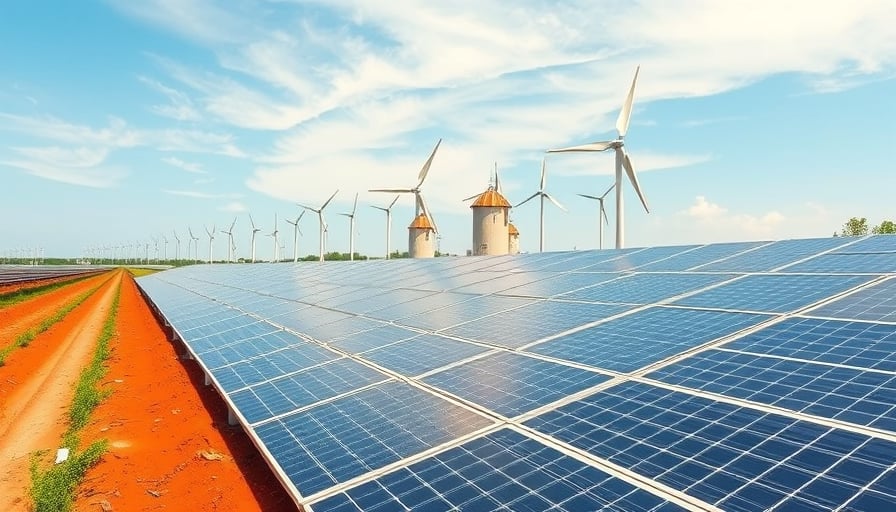Corporate Developments at Veolia Environnement SA and Implications for Power Infrastructure
Veolia Environnement SA, the French multi‑utility conglomerate listed on both the New York Stock Exchange and Euronext Paris, has recently announced a comprehensive strategic plan for 2025‑2030 that seeks to expand its portfolio and enhance shareholder value. Simultaneously, the proposed divestiture of Enviri Corporation’s Clean Earth business to Veolia has entered the regulatory arena, prompting scrutiny over the cash consideration offered to Enviri shareholders. These events are attracting considerable investor attention because they may alter Veolia’s capital structure, investment capacity, and positioning within the evolving energy market.
Strategic Plan 2025‑2030: Portfolio Strengthening and Shareholder Returns
Veolia’s 2025‑2030 strategy underscores three primary thrusts:
Renewable Integration and Grid Modernization Veolia intends to increase its renewable portfolio mix—particularly wind, solar, and battery storage—by 25 % over the next six years. To achieve this, the company will invest in advanced power‑electronic interfaces, such as high‑efficiency inverters and voltage‑sourced converter (VSC) HVDC links, which facilitate bidirectional power flows and support grid stability amid high penetration of distributed resources.
Transmission and Distribution Infrastructure Upgrades A key component of the plan is the deployment of smart grid technologies, including dynamic line rating (DLR) systems and wide‑area monitoring (WAMS). These systems provide real‑time line loading data, enabling operators to optimize power flows and reduce congestion, thereby improving reliability and reducing the need for costly new transmission corridors.
Capital Structure Optimization Veolia is targeting a debt‑to‑equity ratio below 1.5:1 by 2030, coupled with a modest increase in free‑cash‑flow yield to shareholders. This approach is designed to finance the planned infrastructure investments while maintaining liquidity for opportunistic acquisitions and dividend policy adjustments.
Clean Earth Acquisition: Regulatory and Shareholder Considerations
The acquisition of Enviri’s Clean Earth business, a leader in waste‑to‑energy (WtE) solutions, raises several technical and regulatory implications:
Grid Integration of WtE Plants WtE facilities typically operate as steady‑state base‑load generators with a high capacity factor. Integrating these assets into the existing transmission network requires careful coordination to avoid voltage rise and reactive power challenges, especially if the plants are located near distribution feeders with limited reactive compensation.
Renewable Synergy Clean Earth’s portfolio of thermal plants can serve as flexible peaking units that complement intermittent renewable sources. By deploying advanced turbine controls and combined‑cycle gas turbine (CCGT) technologies, Veolia can provide rapid ramp‑up capabilities, which are critical for balancing the variability of solar and wind output.
Regulatory Oversight The transaction has attracted scrutiny from both European and U.S. regulators due to concerns over market concentration and potential cross‑border implications for grid reliability. The legal counsel representing Enviri shareholders is evaluating whether the cash consideration—currently set at €15 million per share—adequately reflects Clean Earth’s future revenue potential, given the projected increase in renewable penetration and the associated demand for flexible generation.
Implications for Grid Stability and Renewable Integration
Enhanced System Flexibility By combining Veolia’s existing renewable assets with Clean Earth’s flexible thermal plants, the company can improve system inertia and frequency response capabilities. This is essential for maintaining grid stability as the share of inverter‑based resources (IBRs) rises.
Investment in Energy Storage Veolia’s strategy includes a target of 1.5 GW of battery storage by 2030. Large‑scale battery projects provide ancillary services—such as voltage support and black‑start capability—that are increasingly valuable in modern grids with high renewable penetration.
Reliability and Resilience Upgrading aging transmission lines with high‑temperature low‑sag (HTLS) conductors and reinforcing distribution networks through the deployment of microgrids can reduce outage frequency and duration, thereby enhancing overall grid resilience.
Regulatory Frameworks, Rate Structures, and Economic Impacts
Regulatory Alignment European Union directives, such as the Renewable Energy Directive (RED II) and the Network Code on Energy System Operation (ENSO), mandate increased renewable integration and demand for flexible resources. Veolia’s planned investments align with these directives, potentially positioning the company favorably for future incentives and subsidies.
Rate Design Considerations The introduction of time‑of‑use (TOU) tariffs and real‑time pricing (RTP) schemes can influence consumer costs. While these tariffs encourage load shifting and reduce peak demand, they also introduce price volatility that can impact consumer acceptance. Veolia must balance the economic benefits of improved system efficiency with the social cost of price fluctuations.
Economic Impact on Utilities Upgrading transmission and distribution infrastructure requires substantial capital outlays, often financed through regulated rate adjustments. The proposed Clean Earth acquisition, combined with Veolia’s investment plan, could lead to a modest increase in regulated charges. However, the long‑term benefits—reduced maintenance costs, lower outage costs, and improved renewable integration—can offset these short‑term expenses.
Conclusion
Veolia Environnement’s strategic expansion and the potential acquisition of Clean Earth represent a significant shift toward a more flexible, renewable‑centric power system. The integration of advanced transmission technologies, smart grid solutions, and flexible thermal generation positions the company to meet evolving regulatory requirements while maintaining competitive rates for consumers. Investor attention will likely focus on how these developments influence Veolia’s capital structure, long‑term profitability, and role in the broader energy transition.




